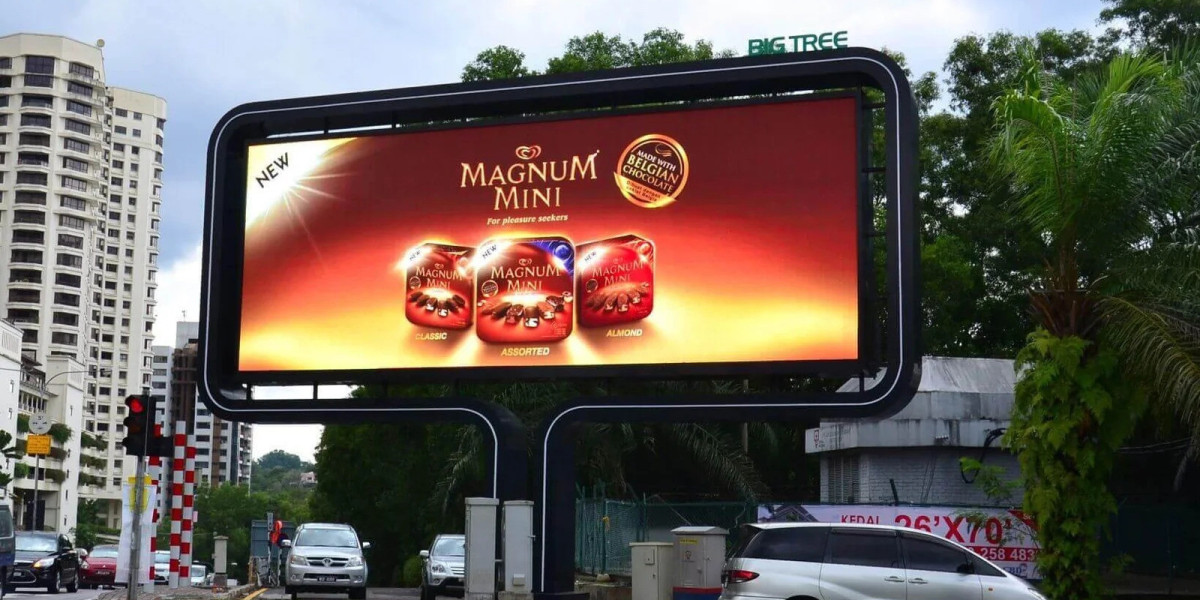In the bustling streets of New York, the vibrant avenues of Tokyo, and the ever-expanding highways of Dubai, digital billboards are lighting up the urban landscape like never before. These dynamic displays are not just a leap in advertising technology; they represent a fundamental shift in how brands communicate with the world. With their eye-catching visuals, real-time updates, and unparalleled flexibility, digital billboards are revolutionizing the advertising industry. Let’s delve into the world of digital billboards, exploring their features, benefits, and the transformative impact they have on modern advertising.
The Rise of Digital Billboards
Digital billboards are electronic displays that show advertisements, information, and other content using LED or LCD technology. Unlike traditional static billboards, which require physical printing and installation, digital billboards can display multiple ads and rotate them in quick succession, allowing for more dynamic and engaging content.
Early Beginnings
The journey of digital billboards began in the early 2000s, with the introduction of large LED displays in major cities. Initially used for simple animations and text, these screens quickly evolved, incorporating full-motion video and high-definition graphics. Today, digital billboards are an integral part of urban environments, offering a modern alternative to traditional outdoor advertising.
Features of Digital Billboards
1. Dynamic Content
One of the most significant advantages of digital billboards is their ability to display dynamic content. Advertisers can use animations, videos, and interactive elements to create captivating advertisements that grab attention and engage viewers.
2. Real-Time Updates
Digital billboards allow for real-time updates, enabling advertisers to change their content instantly. This flexibility is particularly useful for time-sensitive promotions, news updates, and emergency alerts.
3. High Resolution
Modern digital billboards offer high-resolution displays, ensuring that images and videos are crisp and clear, even from a distance. This high level of detail enhances the visual impact of advertisements, making them more memorable and effective.
4. Interactivity
Some digital billboards feature interactive elements, such as touch screens or motion sensors, allowing passersby to engage directly with the content. This interactivity creates a more immersive experience and encourages consumer participation.
5. Environmental Adaptability
Digital billboards can adjust their brightness and contrast based on environmental conditions, ensuring optimal visibility at all times. Whether it’s bright daylight or nighttime, these displays maintain their clarity and impact.
Benefits of Digital Billboards
1. Increased Engagement
The dynamic nature of digital billboards captures attention more effectively than static billboards. The ability to use motion, vibrant colors, and interactive elements makes advertisements more engaging and memorable.
2. Greater Flexibility
Advertisers can easily change the content on digital billboards, allowing for more targeted and timely messaging. This flexibility is especially beneficial for seasonal promotions, special events, and breaking news.
3. Higher ROI
Digital billboards often provide a higher return on investment (ROI) compared to traditional billboards. The ability to display multiple ads on the same screen and the increased engagement from dynamic content contribute to better advertising outcomes.
4. Sustainability
By reducing the need for physical printing and installation, digital billboards contribute to more sustainable advertising practices. They also consume less paper and other materials, aligning with environmental conservation efforts.
5. Data Integration
Many digital billboards are integrated with data analytics tools, allowing advertisers to track the performance of their ads in real-time. This data-driven approach helps optimize campaigns and improve overall advertising effectiveness.
Applications of Digital Billboards
1. Urban Advertising
In urban environments, digital billboards are a common sight. They are used to promote a wide range of products and services, from fashion and electronics to food and entertainment. Their high visibility and dynamic content make them ideal for busy city streets and shopping districts.
2. Public Information
Digital billboards are also used to display public information, such as weather updates, traffic alerts, and emergency notifications. Their ability to provide real-time updates makes them valuable tools for public communication.
3. Events and Promotions
For events and promotions, digital billboards offer a powerful way to reach large audiences. They can display event schedules, ticket information, and promotional content, attracting attention and driving attendance.
4. Corporate Communication
Companies use digital billboards for corporate communication, both internally and externally. They can display important announcements, corporate values, and employee recognition, fostering a sense of community and engagement.
5. Creative Campaigns
Digital billboards open up new possibilities for creative advertising campaigns. Brands can use innovative concepts and interactive elements to create unique and memorable experiences for consumers.
Case Studies: Digital Billboards in Action
1. Times Square, New York
Times Square is perhaps the most iconic example of digital billboards in action. With its vibrant and constantly changing displays, it showcases the power of digital advertising on a grand scale. Major brands use these billboards to launch new products, create buzz, and connect with millions of viewers.
2. Piccadilly Circus, London
Piccadilly Circus in London is another prime location for digital billboards. The large screens display a mix of advertisements, public information, and artistic content, making it a cultural and commercial hub.
3. Shibuya Crossing, Tokyo
In Tokyo’s bustling Shibuya Crossing, digital billboards dominate the landscape. These screens display a variety of content, from fashion and technology ads to public service announcements, creating a dynamic and engaging environment.
Challenges and Considerations
1. Cost
While digital billboards offer many benefits, they can be expensive to install and maintain. The initial investment and ongoing costs for electricity, software updates, and repairs can be significant.
2. Regulations
Digital billboards are subject to regulations and zoning laws, which can vary by location. Advertisers must ensure compliance with local rules regarding brightness, content, and placement to avoid legal issues.
3. Technical Issues
Like any technology, digital billboards can experience technical issues, such as screen malfunctions or connectivity problems. Regular maintenance and reliable technical support are essential to keep them running smoothly.
Future Trends in Digital Billboards
1. Augmented Reality (AR)
Augmented Reality (AR) is set to play a significant role in the future of digital billboards. AR-enabled billboards can create interactive experiences by overlaying digital content onto the real world, engaging consumers in innovative ways.
2. Programmatic Advertising
Programmatic advertising, which uses automated systems to buy and display ads based on real-time data, is becoming more prevalent in digital billboards. This approach allows for more targeted and efficient advertising, maximizing the impact of each ad.
3. Sustainable Practices
As sustainability becomes increasingly important, digital billboard manufacturers are focusing on developing more energy-efficient and eco-friendly technologies. Advances in LED and solar power are helping reduce the environmental footprint of these displays.
4. Personalization
Personalization is another emerging trend in digital billboards. Using data analytics and artificial intelligence, advertisers can create tailored ads that resonate with specific audiences, enhancing engagement and effectiveness.
Tips for Effective Digital Billboard Advertising
1. Keep it Simple
Digital billboards are often viewed from a distance and for short periods, so it’s essential to keep the message simple and clear. Use bold text, striking visuals, and a concise call to action to capture attention quickly.
2. Use High-Quality Visuals
High-resolution images and videos enhance the visual impact of your ad. Ensure that all content is professionally designed and optimized for the billboard’s resolution and size.
3. Incorporate Movement
Motion attracts attention, so consider incorporating animations or videos into your digital billboard ads. However, avoid overly complex animations that can be distracting or hard to follow.
4. Update Content Regularly
Regularly updating your content keeps it fresh and engaging. Take advantage of the ability to make real-time updates to reflect current promotions, events, and trends.
5. Leverage Data
Use data analytics to track the performance of your ads and make informed decisions about content and timing. This data-driven approach can help optimize your campaigns and improve ROI.
Conclusion
Digital billboards are transforming the landscape of outdoor advertising, offering dynamic, flexible, and highly engaging platforms for brands to connect with their audiences. From urban centers to public spaces, these modern displays are making a significant impact, enhancing the effectiveness of advertising campaigns and providing valuable public information.








